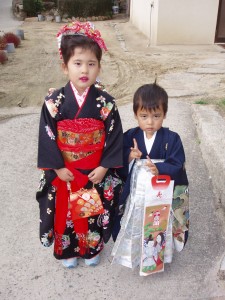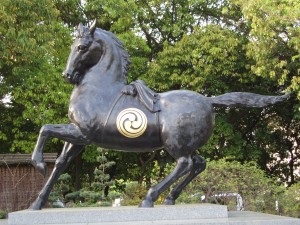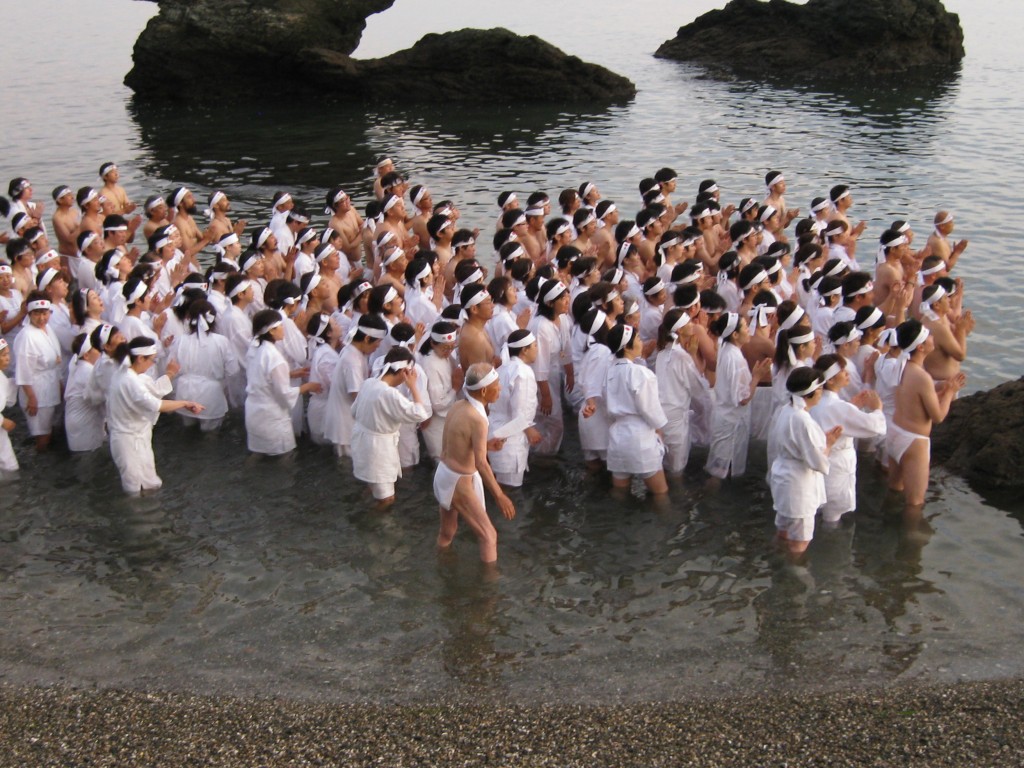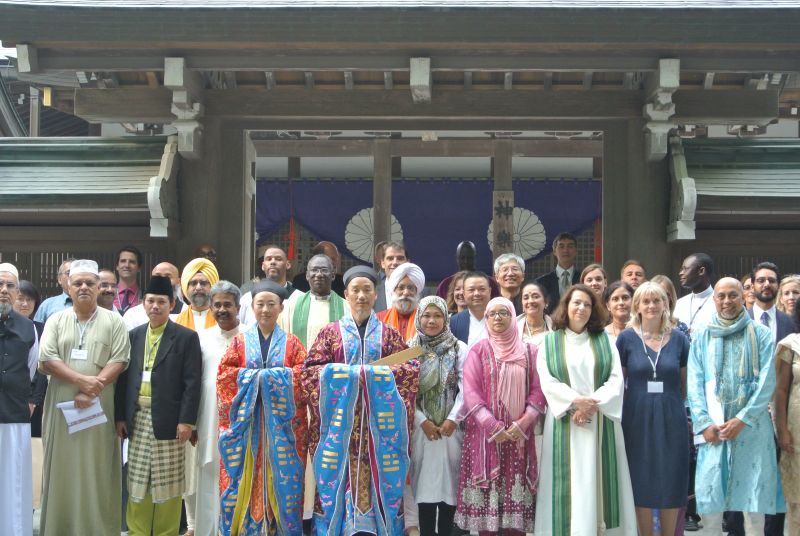
3, 5, 7 are lucky numbers in Taoism .
Not many people realise the debt Shinto owes to Taoism. It’s usually asserted that Shinto is the native religion of Japan, as if it is a purely indigenous creation. In fact, up to 70% of modern Shinto rituals are taken from Taoism (also written as Daoism).
Take the divination for instance, which comes from Taoism. Or take the 7-5-3 numerological symbolism which comes from Tao. Or even the mitsu tomoe, symbol of Shinto, which derives from the Taoist triad of heaven, earth and human.
In a youtube video the presenters put forward five general principles of Taoism, which also speak to the core values of ancient Shinto.
1 God and the universal way are beyond comprehension.
In Taoism it is often said that the Way has no name. Similarly in ancient Shinto the kami had no name. They were seen as local manifestations of a universal force that ran through the universe and were beyond understanding. Talking about the incomprehensible is meaningless. That’s why Shinto has no dogma and doctrine. Only as the Yamato state asserted its power through the means of strategically sited shrines did kami take on the names with which we are familiar today.
2) Good and evil are human perceptions, which do not exist in nature
Christians often attack Shinto as being amoral, and Catholic missionaries of the sixteenth century thought it akin to devil worship because the ‘gods’ of Shinto included malicious as well as benevolent aspects. Taoism, like Shinto, recognises that you can’t have good without evil, any more than you can have light without darkness, or truth without falsehood. There is no supreme good, and Amaterasu is not an almighty and all-knowing goddess.

Mitsu tomoe emblem on a Hachiman horse
3) Nature’s laws are heaven’s laws
Taoism looks to nature as the supreme teacher, and Shinto is rooted in kannagara, the way of nature. ‘Heaven follows the way of Tao, and Tao follows the laws of nature,’ says the Tao Te Ching. The consequence that both Tao and ancient Shinto draw from this are similar: ‘living in harmony with the earth, keeping your body healthy, taking care of your family, living a simple natural lifestyle – these are the ways to cultivate contentment, virtue and life,’ runs the Taoist ideal. Similar values are found in ancient Shinto, which put forward the ideals of sincerity, simplicity and naturalness.
4) Karma is self-inflicted
There is no divine punishment by some entity which judges our moral behaviour, but rather natural consequences that flow from our actions. Heaven and the ways of nature are impartial. Selfishness and wrong-doing however result in suffering. You reap what you sow.
(Taoism combines this with a belief in reincarnation, which I think differentiates it from Shinto, where life after death is left to Buddhism and ancestor worship.)
5) All is one
We are all part of one universe and share in the ultimate mystery. Words and the naming of things spread division, but silence and wonder are the natural response. ‘The unity is said to be the Mystery. Mystery of mysteries – the door to all wonders,’ says the Tao Te Ching. Take life as it is, lead a balanced lifestyle, keep healthy, contribute to the community, practise tai chi or aikido, strive for oneness, don’t cultivate the ego. Selflessness. Here Taoism merges with Shinto which merges with Buddhism. All is ultimately one.
***************
For a 8.30 minute long video of Five Beliefs that Make You Taoist, click here.

Purification rites like this derive from Taoist influence. Simple, healthy, life-affirming immersion in nature.

A multifaith meeting at Ise with Taoists front centre
